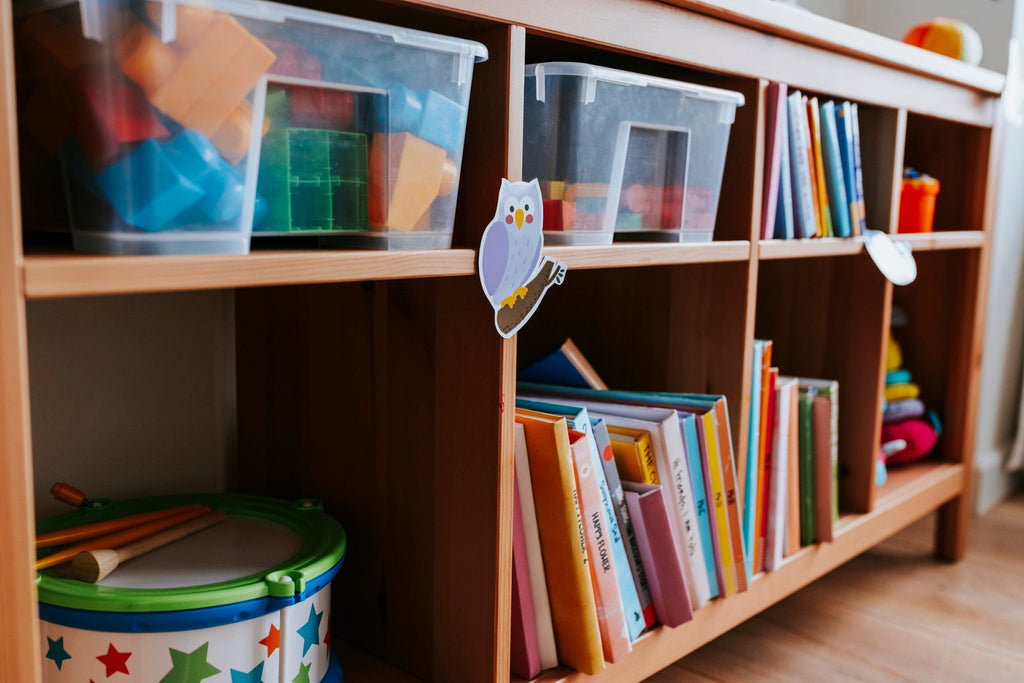6 Proven Classroom Management Tips for New Early Childhood Educators

When you have 25 or so little kids running around, managing them can be difficult. Whether you’re a brand new teacher or have some experience, having some management strategies up your sleeve can help. Today’s blog from Kindermark Kids offers some proven classroom management techniques that you can start implementing today.
 1. Strategically Organize Your Classroom.
1. Strategically Organize Your Classroom.
Before attempting to organize your students, make sure the space they are in is organized. Not only will a strategic room help you avoid chaos, it can help ensure that effective learning is happening. Separate noisy areas of the room from the quiet areas. As an example, the building blocks shouldn’t be right next to the reading center. Bonus Tip: Stay organized both physically and emotionally by tightening up time management.
2. Effectively Plan Transitions.
Transitioning from one activity to another presents an opportunity for chaos. Find an effective way of transitioning and use that to help children avoid distractions. Guide them through these moments, so that you keep their attention and can move to the next activity without a bunch of wasted time. Try announcing how much time they have left at their current station, or creating a fun countdown to help students prepare to move on to the next thing. Bonus Tip: Get students engaged and actively involved to avoid disruptions.
3. Create a Routine.
Consistency is important, especially for children of a young age. When students are aware of the routine, they start to feel a sense of obligation to follow that routine. It gives them a sense of ownership over the routine and eventually you won’t have to keep reminding them what comes next. Bonus Tip: Consistency is important for not only your routine, but also for expectations and discipline.
4. Choose Your Rules Wisely.
More rules does not lead to better behavior. Make sure to set rules early on, but in a way that doesn’t create an atmosphere of rebellion. Rules and routines are great for communicating expectations, but not necessarily the only way to “manage” your classroom. Bonus Tip: Always have a plan in mind for handling misbehavior.
5. Avoid Confrontations in Front of Students.
If you’re dealing with a child that’s misbehaving, speak to them away from the other students. Take them out into the hallway or wait until class is over. Having confrontations in front of peers can not only impact the child’s self-esteem, but the situation can escalate quickly. They will likely be more quickly to defend themselves when in the public eye. Public shaming is never a good way to set an example. Bonus Tip: Pick your battles wisely.
 6. Use Positive Language Always.
6. Use Positive Language Always.
What usually happens when you tell a child not to do something? They are tempted to do it. Avoid using negative language and focus on positives. Try “Be prepared” rather than “Don’t forget your pencil” or “Shut the door quietly” instead of “Don’t slam the door.” Bonus Tip: Use the word “consequences” instead of “punishments.”
From classroom organization and storage to engaging your students in interactive learning, Kindermark Kids is here to provide you with quality products for your classroom. We offer everything from educational toys and child height furniture to storage units and portable sinks. Browse our website to see what you could use in your space to make managing your classroom easier.
Kindermark Kids - Creating Child-Friendly Spaces!
- Erin Burdette

